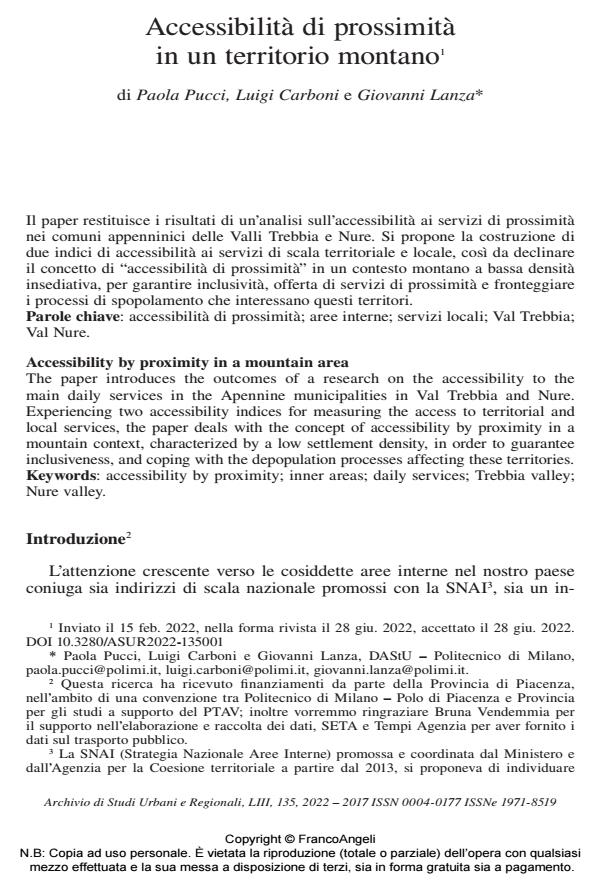Accessibility by proximity in a mountain area
Journal title ARCHIVIO DI STUDI URBANI E REGIONALI
Author/s Paola Pucci, Luigi Carboni, Giovanni Lanza
Publishing Year 2023 Issue 2022/135
Language Italian Pages 22 P. 5-26 File size 284 KB
DOI 10.3280/ASUR2022-135001
DOI is like a bar code for intellectual property: to have more infomation
click here
Below, you can see the article first page
If you want to buy this article in PDF format, you can do it, following the instructions to buy download credits

FrancoAngeli is member of Publishers International Linking Association, Inc (PILA), a not-for-profit association which run the CrossRef service enabling links to and from online scholarly content.
The paper introduces the outcomes of a research on the accessibility to the main daily services in the Apennine municipalities in Val Trebbia and Nure. Experiencing two accessibility indices for measuring the access to territorial and local services, the paper deals with the concept of accessibility by proximity in a mountain context, characterized by a low settlement density, in order to guarantee inclusiveness, and coping with the depopulation processes affecting these territories.
Keywords: accessibility by proximity; inner areas; daily services; Trebbia valley; Nure valley.
- Enabling Immobilities: Social and Spatial Implications for Urban Planning Giovanni Lanza, pp.63 (ISBN:978-3-031-80998-9)
- Computational Science and Its Applications – ICCSA 2025 Workshops Barbara Caselli, Altea Panebianco, Silvia La Placa, Rossella Laera, pp.160 (ISBN:978-3-031-97656-8)
Paola Pucci, Luigi Carboni, Giovanni Lanza, Accessibilità di prossimità in un territorio montano in "ARCHIVIO DI STUDI URBANI E REGIONALI" 135/2022, pp 5-26, DOI: 10.3280/ASUR2022-135001